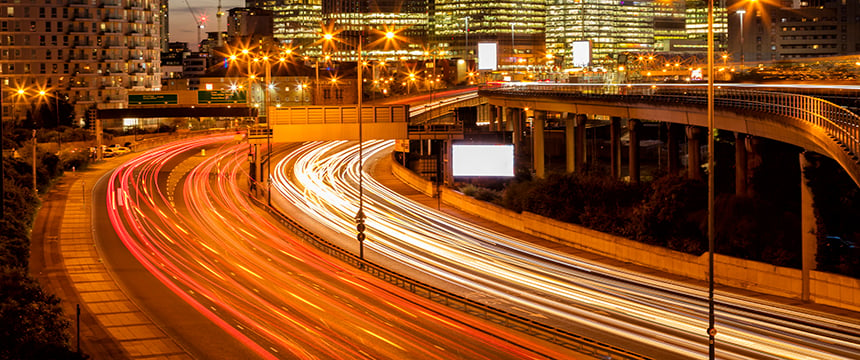Continued Increase in E-Commerce and Online Ordering Changes Landscape of Urban Transportation

Writing out a grocery list, meandering the aisles of the grocery store, heading to the mall for clothes—these used to be common for consumers. Now, there is an increasing trend toward online grocery ordering and e-commerce, with either delivery services or quick pick up replacing the traditional brick and mortar grocery experience. Similarly, apps like Postmates, Grubhub/Seamless, Doordash, Yelp, Uber Eats, ChowNow, and many others offer the same experience with meals, toiletries, and more. The shift from traditional retail to e-commerce is widely known and analyzed. As a result, city planners, transportation companies, and analysts are turning increasing attention towards the impact of this increase in delivery on driving trends.
As Curbed reported earlier this year, “urban freight traffic attributed to online shopping and e-commerce doubled” between 2009 and 2018. And although as of early 2019, only 3 percent of grocery spending in the US, grocery delivery is as high as 15 percent in the United Kingdom and South Korea. Forbes reports online grocery shopping is predicted to double between 2017 and 2021. This will only further increase the number of pooled deliveries in transport modes ranging from cargo bikes to box trucks on urban streets.
Cities around the country and the world have strategized about how to address the impact of a shift to a delivery culture. According to the BBC, some cities in Europe and Asia are limiting delivery to certain hours of the day. Experts in urban planning in the U.S. have considered similar recommendations and ways to plan for the increase in urban freight deliveries.
For companies that are involved in these “last mile” deliveries, business is booming. Pitney Bowes released its Parcel Shipping Index on October 10, 2019, reporting global parcel volume skyrocketed from 74 billion in 2017 to 87 billion in 2018. Pitney Bowes estimates “this figure will more than double within the next six years and reach 200 billion parcels by 2025 with a 13.7 percent CAGR for 2019-2023.” Already, these companies are working with researchers and urban planners to consider and address the shifts in urban driving associated with increased deliveries. As deliveries only increase, the need for considering “urban freight” and associated traffic patterns will become more pressing.
